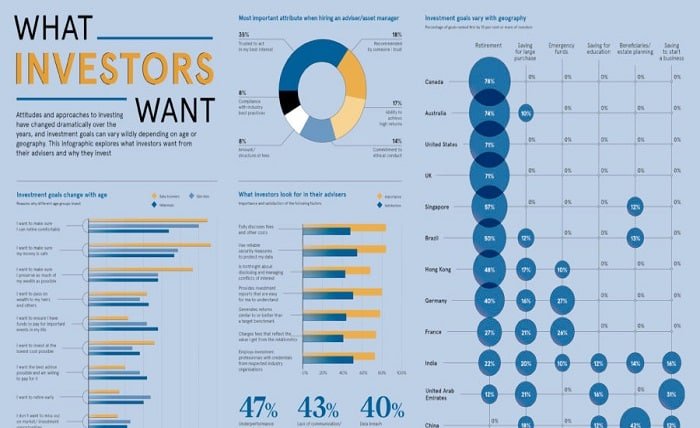
Introduction
Setting clear and achievable investment goals is crucial for financial success. Whether you are a novice investor or a seasoned professional, having well-defined investment goals helps guide your financial decisions, manage risks, and maximize returns. This comprehensive guide will walk you through the process of crafting and achieving your investment goals.
Investment Goals
Investment goals are specific financial targets you aim to achieve through investing. These goals can vary widely depending on individual circumstances, risk tolerance, and time horizons. Understanding your investment goals is the first step towards building a solid financial future.
The Importance of Setting Investment Goals
Having clear investment goals provides direction and purpose to your investment strategy. It helps you stay focused, make informed decisions, and measure your progress. Without defined investment goals, it’s easy to get sidetracked and make impulsive decisions that could jeopardize your financial health.
Types of Investment Goals
Investment goals can be broadly categorized into short-term, medium-term, and long-term goals. Short-term goals might include saving for a vacation or emergency fund, while medium-term goals could involve buying a home or funding education. Long-term goals typically encompass retirement planning and wealth accumulation.
Identifying Your Investment Goals
To identify your investment goals, start by assessing your current financial situation, future needs, and personal aspirations. Consider factors such as your age, income, expenses, and risk tolerance. Clear and specific investment goals are easier to achieve and monitor.
Setting SMART Investment Goals
SMART (Specific, Measurable, Achievable, Relevant, Time-bound) criteria are essential for effective goal setting. For example, instead of stating “I want to save money,” a SMART investment goal would be “I want to save $10,000 for a down payment on a house within five years.”
Aligning Investment Goals with Risk Tolerance
Your risk tolerance plays a critical role in shaping your investment goals. High-risk tolerance may allow for more aggressive goals with higher potential returns, while a low-risk tolerance may necessitate conservative goals with stable, lower returns. Aligning your goals with your risk tolerance ensures a comfortable and sustainable investment strategy.
Creating an Investment Plan
An investment plan outlines the steps to achieve your investment goals. It includes asset allocation, investment selection, and periodic review. A well-structured investment plan is crucial for staying on track and adapting to changes in the market or personal circumstances.
Diversifying Your Portfolio
Diversification is a key strategy in achieving your investment goals. By spreading your investments across various asset classes, sectors, and geographies, you can mitigate risks and enhance potential returns. A diversified portfolio aligns with your investment goals and risk tolerance.
Monitoring and Adjusting Your Investment Goals
Regularly monitoring your progress towards your investment goals is essential. Review your portfolio’s performance, reassess your goals, and make necessary adjustments. Life events, market changes, and evolving financial needs may require you to modify your investment goals and strategies.
The Role of Professional Advice in Achieving Investment Goals
Seeking professional financial advice can be invaluable in setting and achieving your investment goals. Financial advisors provide personalized strategies, insights, and expertise to help you navigate complex investment landscapes and stay on course.
Common Mistakes to Avoid
Avoiding common pitfalls is crucial for successful investing. Common mistakes include lack of clear goals, emotional decision-making, inadequate diversification, and failure to review and adjust the investment plan. Being aware of these mistakes helps you stay focused on your investment goals.
Success Stories: Achieving Investment Goals
Learning from success stories can inspire and guide you in achieving your investment goals. Consider examples of individuals who have successfully reached their financial targets through disciplined planning, strategic investments, and regular reviews.
Conclusion
Setting and achieving investment goals is a continuous process that requires careful planning, disciplined execution, and regular review. By understanding your financial needs, setting SMART goals, and aligning your strategy with your risk tolerance, you can build a robust investment plan that leads to financial success. Embrace the journey with a clear vision and a structured approach to realize your investment goals.
FAQs
Q1: What are investment goals?
A1: Investment goals are specific financial targets that investors aim to achieve through their investment activities, such as saving for retirement, buying a home, or funding education.
Q2: Why are investment goals important?
A2: Investment goals provide direction, purpose, and a framework for making informed financial decisions, helping investors stay focused and measure their progress towards financial success.
Q3: How can I identify my investment goals?
A3: To identify your investment goals, assess your current financial situation, future needs, personal aspirations, and risk tolerance. Clear and specific goals are easier to achieve and monitor.
Q4: What is a SMART investment goal?
A4: A SMART investment goal is Specific, Measurable, Achievable, Relevant, and Time-bound. For example, “Save $10,000 for a down payment on a house within five years.”
Q5: How often should I review my investment goals?
A5: Regularly review your investment goals at least annually or whenever significant life events, market changes, or personal circumstances occur, to ensure they remain aligned with your financial situation and objectives.





